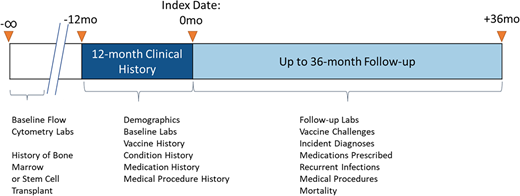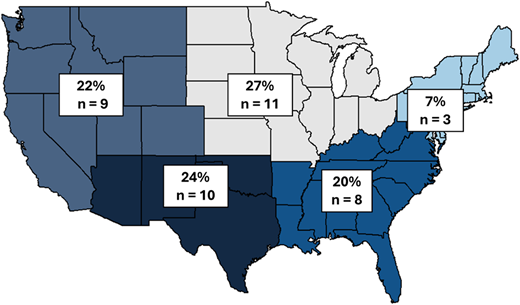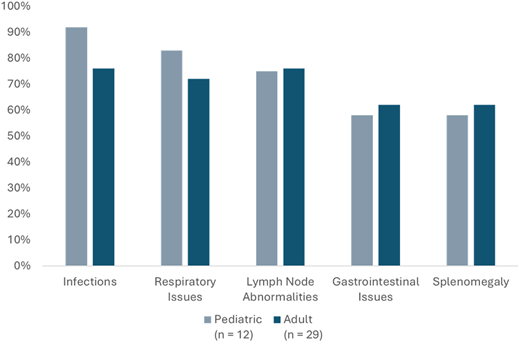Activated phosphoinositide 3-kinase delta syndrome (APDS) is a rare disorder with autosomal dominant inheritance pattern that leads to immune deficiency and dysregulation. As APDS was first characterized in 2013, there are gaps in knowledge related to the demographic and clinical characteristics of patients affected by APDS. The APDS-CHOIR registry was constructed to provide increased visibility into this population. Here we present baseline characteristics of APDS-CHOIR enrollees through October 2024.
Participants qualifying for the study were required to have a genetically confirmed pathogenic variant in PIK3CD or PIK3R1. Data from electronic health records (EHR) were entered directly by participating sites and includes demographic data, comorbidities, infection history, lab results, and transplant history. Diagnostic and screening procedures ordered by treating physicians were collected to understand healthcare resource utilization of this population (Figure 1).
Currently, 41 participants have been enrolled across the U.S. (Figure 2). The median age at enrollment was 21 years (range 4-70) with majority female (63%) gender and white race (68%). Participants were diagnosed with APDS a median of 2 years prior to the enrollment date, with 39% diagnosed within 1 year prior to the index date. Most patients have PIK3CD pathogenic variant (76%). Medicaid was the most common payer type (41%), followed by commercial payer (29%). The most common clinical manifestations of disease reported are infections (80%), lymph node abnormalities (76%), respiratory issues (76%), gastrointestinal issues (63%), and splenomegaly (63%); these are most common in both pediatric and adult patients (Figure 3). At or prior to enrollment, 10 (24%) had been prescribed leniolisib, 9 (22%) mTOR inhibitors (sirolimus or everolimus), and 26 (63%) IVIG therapy. Bone marrow or stem cell transplants were identified in 6 patients prior to enrollment.
The real-world data from the APDS-CHOIR registry allow for the versatile phenotyping of patients with APDS and documentation of their clinical care. The longitudinal observational nature of this registry will provide insights into the evolving clinical manifestations of patients with APDS and responses to treatments over time in this rare-disease population.







